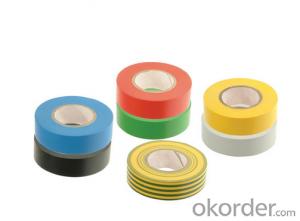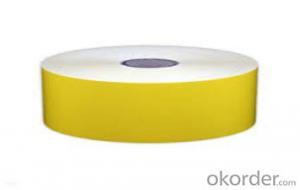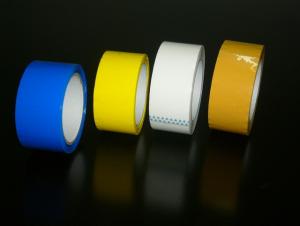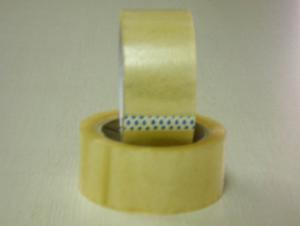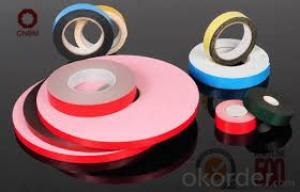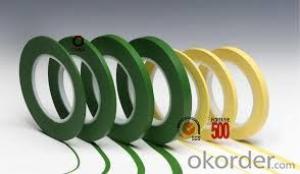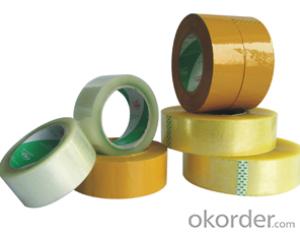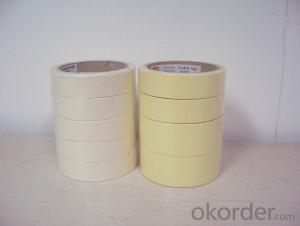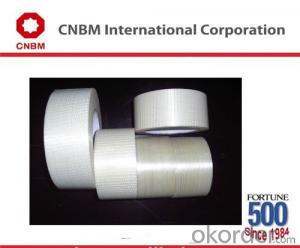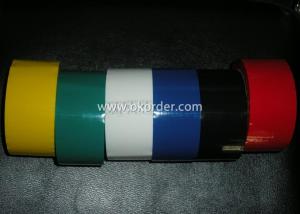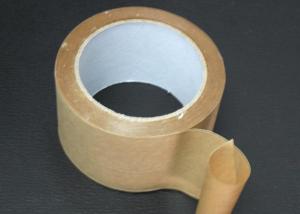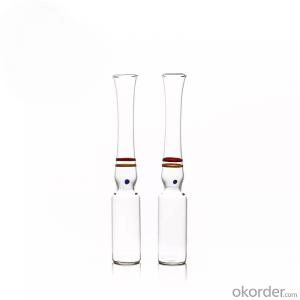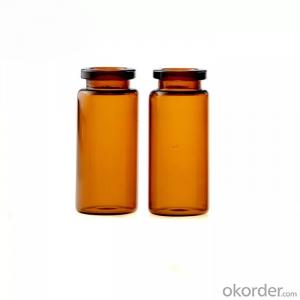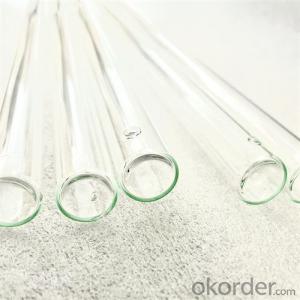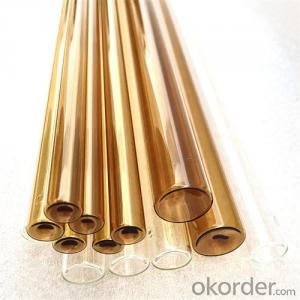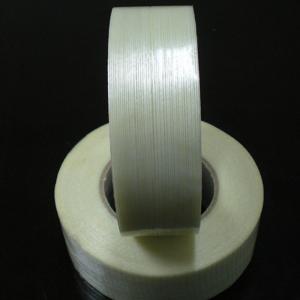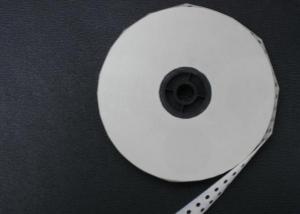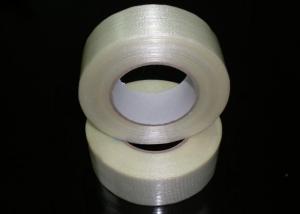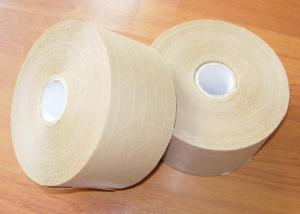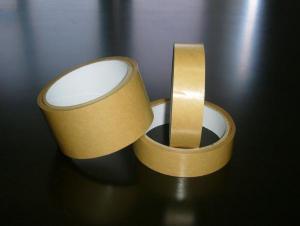Single Sided Rubber Masking Adhesive Tape for Auto Painting
- Loading Port:
- Tianjin
- Payment Terms:
- TT OR LC
- Min Order Qty:
- 100 roll
- Supply Capability:
- 500000 roll/month
OKorder Service Pledge
OKorder Financial Service
You Might Also Like
1.Product details
Item | NKS-3565SIG | NKS-5080SIG |
Color | Clear/Green/Blue | Clear/Green/Blue |
Carrier | Polyester | Polyester |
Adhesive | Silicone | Silicone |
Carrier Thickness (mm) |
0.035 |
0.05 |
Adhesive Thickness (mm) |
0.025 |
0.03 |
Total Thickness (mm) |
0.06 |
0.08 |
Adhesion (N/25mm) | 6 | 6 |
Tensile Strength (N/25mm) |
135 |
220 |
Elongation at Break (%) | 40 | 50 |
Corrosion Resistance | 1 | 1 |
Storage Condition | 20°C,65RH | 20°C,65RH |
Long Term Heat Resistance (°C) |
180 |
180 |
Short Term Heat Resistance (°C) |
220 |
220 |
2.FEATURES
(1)High temperature masking
(2)Powder coating masking
(3)High temperature resistance without adhesive residue
(4)Plasma spraying
3. product show
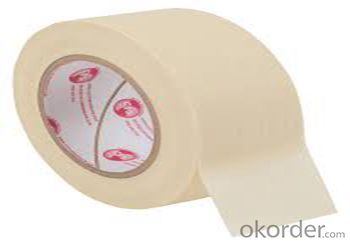

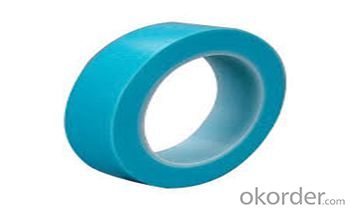
4.Product Description
(1) High quality cured rubber-adhesive which is designed for good adhesion and no-residue removal, with the temperature resistance to 70℃-150℃.
(2)Cut and packed by Italy automotive cutting and packing machine, with the perfect trim margin of the tape, easy to peel and no break.
(3) Good to write on the tape surface, easily use for marking.
5.About us
China National Building Material Group Corporation(CNBM), estiblished in 1984, as the largest group corporation of building materials in China. It ranked the 267th among the global FORTUNE 500 CORPORATIONS. And it's a China state-owned enterprise, ranked the 143 large-scale groups under the administration of the state-owned Assets supervision and administration commission of the state council.
With thelargest geosynthetics base about 667000m2 in China and have about 120production lines for all geo materials. For geotextile, our production capacity each day can be 300,000m2. We warmly welcome your order and visit. CNBM guarantee good quality and serivce with comptetitive prices.
6.Our services
1.OEM Service
Your own design is appreciated; we can make the approval sample according to your golden sample.
2. QC Service
a) Before the order to be confirmed, we should check the material & color of fabric by sample which should be strictly.
b) We will be tracing the different phase of production from the beginning.
c) Every bad quality will be checked & cleaned before packing.
d) Before delivery clients could send one QC or point the third party to check the quality.
e) We will try our best to help clients when problem occurred.
3. After-sale Service
a) EXW, FOB, C&F are also available for us.
b) If the products need certificate, we can also provide.
7.FAQ:
Q1: Are you manufacturer or trading company?
A: We are professional Manufacturer.
Q2: Can I use our own designing?
A: Yes, size, printing, color, paper core, logo, carton box can be customized.
Q3: May I have samples?
A: Yes, Free samples available and freight collect by DHL, FEDE
- Q:What is the difference between acrylic and hot melt packaging tape?
- Acrylic packaging tape is a type of adhesive tape that is made from a water-based acrylic adhesive. It offers a strong bond and is ideal for sealing cardboard boxes and other packaging materials. It has good temperature resistance and performs well in a wide range of temperatures. On the other hand, hot melt packaging tape is made from a synthetic rubber adhesive that is melted and applied to the tape during the manufacturing process. It provides an instant and aggressive bond, making it suitable for heavy-duty packaging and sealing applications. Hot melt tape offers excellent adhesion to various surfaces, including corrugated cardboard and plastic. In summary, the main difference between acrylic and hot melt packaging tape lies in their adhesive composition and application process. Acrylic tape uses a water-based adhesive, while hot melt tape uses a rubber-based adhesive that is melted. Additionally, hot melt tape provides a stronger initial bond and is often used for heavy-duty packaging needs.
- Q:Can packaging tape be used for sealing automotive parts or equipment?
- Sealing automotive parts or equipment with packaging tape is generally not recommended. Packaging tape is designed for securely sealing lightweight materials like cardboard boxes, but it may lack the durability and adhesive strength necessary for automotive use. Automotive parts and equipment experience various conditions like heat, vibrations, and exposure to chemicals, which can degrade or weaken packaging tape over time. Furthermore, specialized sealing methods like gaskets, seals, or automotive-grade adhesives are typically required for proper functionality and long-lasting performance. Therefore, it is generally advisable to use sealing methods and materials specifically designed for automotive applications to ensure desired performance and reliability.
- Q:How do I prevent packaging tape from becoming too sticky?
- To avoid packaging tape becoming excessively sticky, there are several precautions you can take: 1. Keep the tape in a cool and dry location: Excessive heat and humidity often lead to the adhesive on packaging tape becoming stickier. It is important to store the tape in a cool and dry environment to maintain its proper consistency. 2. Prevent contact with dust and debris: Dust and debris easily adhere to the adhesive side of the tape, increasing its stickiness. Keep the tape away from dusty surfaces and ensure that the areas where you plan to apply the tape are clean and free from loose particles. 3. Utilize a tape dispenser: A tape dispenser aids in controlling the amount of tape you use and prevents excessive stickiness. It allows for a more precise application, ensuring that you do not use more tape than necessary. 4. Avoid excessive stretching of the tape: Stretching the tape excessively while applying it can cause it to become stickier. Apply the tape smoothly without pulling or stretching it too much, as this can activate the adhesive further. 5. Consider using low-tack or removable tape: If you frequently encounter problems with sticky packaging tape, you may consider using low-tack or removable tape. These types of tape have less aggressive adhesive properties and are easier to remove without leaving sticky residue. By following these guidelines, you can maintain the desired level of stickiness on your packaging tape and streamline your packaging process.
- Q:What are the considerations for using packaging tape on wooden surfaces?
- There are several factors to consider when using packaging tape on wooden surfaces. Firstly, it is crucial to select the appropriate type of tape for the wood. Choose a tape specifically designed for wood or one with a gentle adhesive to prevent damage or residue. Avoid strong adhesive or duct tapes that may leave sticky residue or peel off the wood's finish. Secondly, take into account the condition of the wood. If it is old, fragile, or has cracks, extra precautions are necessary. Applying tape directly to damaged or delicate wood can cause further harm, such as stripping the varnish or causing splintering. In such cases, alternative methods should be used to secure or protect the wood. Consider the duration for which the tape will be applied. If it is temporary, most types of packaging tape are generally safe to use. However, if the tape will be left on the wood for an extended period, choose a tape that is less likely to damage or leave residue when removed. Additionally, be mindful of the climate or environment in which the wood will be situated. Extreme temperatures or humidity can affect the adhesive properties of the tape, potentially causing it to lose stickiness or damage the wood. In such cases, alternative methods may be required to secure or protect the wood. Lastly, always test a small, inconspicuous area of the wood with the tape before applying it extensively. This allows for assessment of any potential damage or residue and helps make an informed decision about using the tape on the entire wood surface. By considering these factors, one can ensure the safe use of packaging tape on wooden surfaces without causing unnecessary damage or issues.
- Q:What are the considerations for using packaging tape on painted surfaces?
- When considering using packaging tape on painted surfaces, there are several important considerations to keep in mind. Firstly, it is crucial to assess the type and condition of the paint on the surface. If the paint is old, flaking, or in poor condition, using packaging tape may cause further damage such as peeling or chipping off the paint. In such cases, it is advisable to avoid using tape directly on the painted surface. Another important consideration is the adhesive strength of the packaging tape. Some tapes have strong adhesives that may stick firmly to the painted surface, making it difficult to remove without damaging the paint. It is recommended to test a small, inconspicuous area with the tape to ensure it can be safely removed without leaving residue or causing any harm. Furthermore, it is crucial to consider the duration for which the tape will be applied. If the tape is intended to be left on the painted surface for an extended period, there is a higher risk of it causing damage. Over time, the adhesive may bond more strongly with the paint, making it harder to remove without causing any harm. Additionally, the surface texture plays a role in determining the suitability of using packaging tape. Rough or uneven surfaces may not allow the tape to adhere properly, leading to lifting or peeling, which can damage the paint. Lastly, it is essential to consider the purpose of using packaging tape on the painted surface. If the objective is to protect the paint from scratches or damage during transportation or storage, alternative methods such as using protective sheets or bubble wrap may be more suitable and less likely to harm the paint. In conclusion, when considering using packaging tape on painted surfaces, one must assess the type and condition of the paint, adhesive strength, duration of application, surface texture, and the purpose of using the tape. By taking these considerations into account, one can ensure that the tape is used safely without causing any damage to the painted surface.
- Q:Can packaging tape be used for sealing furniture or home goods?
- Packaging tape can indeed be utilized to seal furniture or home goods. Its design aims at delivering a secure and robust seal, rendering it apt for diverse applications like sealing boxes and packages. By employing packaging tape on furniture or home goods, one can effectively safeguard the item during transportation or storage. It is crucial to ensure the tape's proper application, avoiding any surface damage or residue. Furthermore, depending on the item's weight and size, it may be advisable to employ specialized tapes or techniques specifically tailored for sealing furniture or home goods, ensuring optimal protection.
- Q:Can packaging tape be used for sealing glass or delicate items?
- Yes, packaging tape can be used for sealing glass or delicate items. However, it is important to handle the items with care and apply the tape gently to avoid any damage. It is recommended to use a cushioning material like bubble wrap or foam to provide additional protection before sealing with packaging tape.
- Q:Can packaging tape be used for sealing plastic wrap?
- Typically, packaging tape is not employed for sealing plastic wrap. Its purpose lies in firmly sealing packages by adhering to cardboard and other surfaces. Conversely, plastic wrap is a thin, see-through film utilized to cover and safeguard food or other objects. It is usually sealed by pressing the edges together or utilizing a specific plastic wrap cutter. Although packaging tape may serve as a temporary seal, it is not intended for use with plastic wrap and may fail to provide a dependable or durable seal. It is advisable to adhere to the manufacturer's recommended method for sealing plastic wrap.
- Q:What type of rubber tape and hot-melt tape?
- Application of duct tape 2, duct tape is mainly used for carton sealed, carpet seams together, heavy packing, waterproof packaging etc.. At present in the automotive industry, paper industry, mechanical and electrical industry also frequently used, for automobile cab, chassis, cabinets and other waterproof measures better place. Easy die cutting.3, tape tape according to different classification can be divided into hot melt glue, tape, rubber tape.
- Q:What is the average width of packaging tape?
- The average width of packaging tape is typically 2 inches.
1. Manufacturer Overview |
|
|---|---|
| Location | |
| Year Established | |
| Annual Output Value | |
| Main Markets | |
| Company Certifications | |
2. Manufacturer Certificates |
|
|---|---|
| a) Certification Name | |
| Range | |
| Reference | |
| Validity Period | |
3. Manufacturer Capability |
|
|---|---|
| a)Trade Capacity | |
| Nearest Port | |
| Export Percentage | |
| No.of Employees in Trade Department | |
| Language Spoken: | |
| b)Factory Information | |
| Factory Size: | |
| No. of Production Lines | |
| Contract Manufacturing | |
| Product Price Range | |
Send your message to us
Single Sided Rubber Masking Adhesive Tape for Auto Painting
- Loading Port:
- Tianjin
- Payment Terms:
- TT OR LC
- Min Order Qty:
- 100 roll
- Supply Capability:
- 500000 roll/month
OKorder Service Pledge
OKorder Financial Service
Similar products
New products
Hot products
Related keywords
